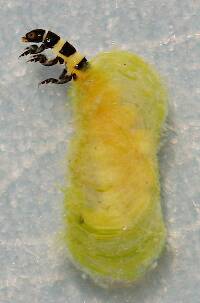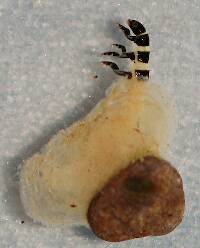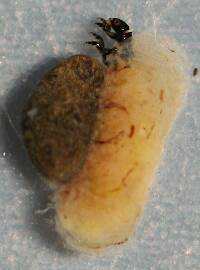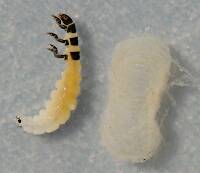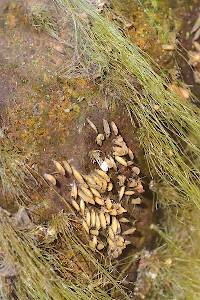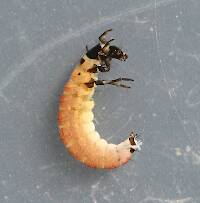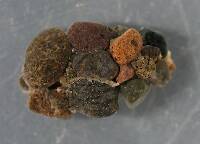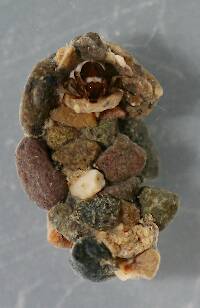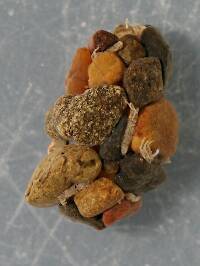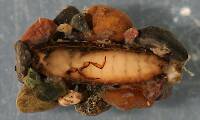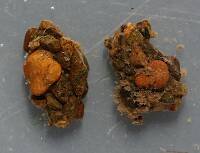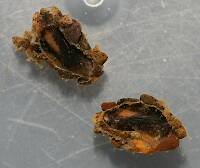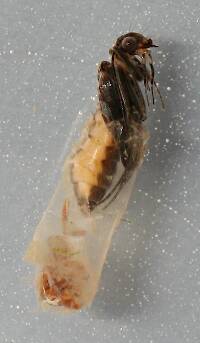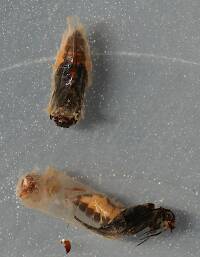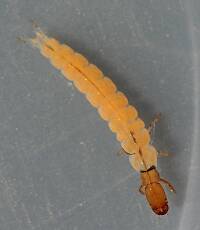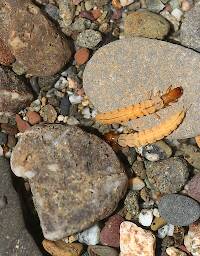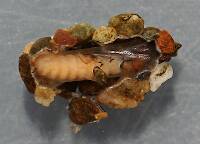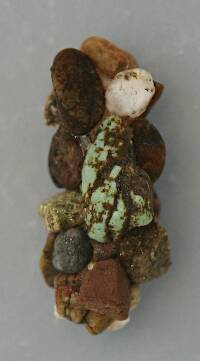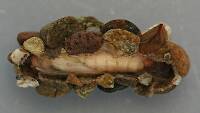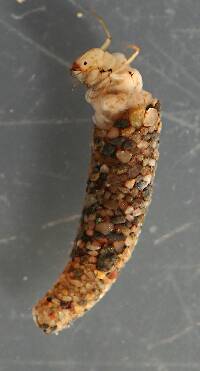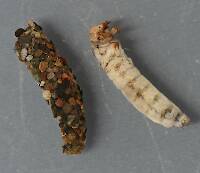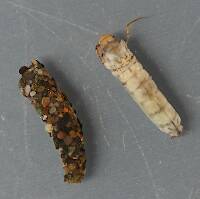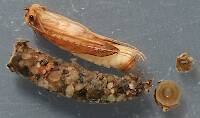
Hex Mayflies
Hexagenia limbata
The famous nocturnal Hex hatch of the Midwest (and a few other lucky locations) stirs to the surface mythically large brown trout that only touch streamers for the rest of the year.
Featured on the forum

This one was surprisingly straightforward to identify. The lack of a sclerite at the base of the lateral hump narrows the field quite a bit, and the other options followed fairly obvious characteristics to Clostoeca, which only has one species, Clostoeca disjuncta.

Troutnut is a project started in 2003 by salmonid ecologist Jason "Troutnut" Neuswanger to help anglers and
fly tyers unabashedly embrace the entomological side of the sport. Learn more about Troutnut or
support the project for an enhanced experience here.
Emerger
Posts: 4
Posts: 4
Emerger on Nov 15, 2007November 15th, 2007, 10:27 am EST
Need help in recognizing mature stonefly nymphs and caddis pupae. With mayflies you can see it from the wing pads, but what about these two?
Caddis pupae is pretty mature anyway, but how can you tell how far is it from the final transition to an adult?
And what about the stoneflies? This is what I'm really interested. There's not that much information on this subject, except for recognizing mature mayfly nymphs.
E
Caddis pupae is pretty mature anyway, but how can you tell how far is it from the final transition to an adult?
And what about the stoneflies? This is what I'm really interested. There's not that much information on this subject, except for recognizing mature mayfly nymphs.
E
Troutnut on Nov 15, 2007November 15th, 2007, 11:04 am EST
Many mature stonefly nymphs show blackened wingpads just like mayflies. Others don't seem to, and I'm not sure how to guess how close they are except for size.
I think fully developed caddis pupae, the kind you find swimming around, are all very close to transitioning into adults.
I think fully developed caddis pupae, the kind you find swimming around, are all very close to transitioning into adults.
Jason Neuswanger, Ph.D.
Troutnut and salmonid ecologist
Troutnut and salmonid ecologist
Konchu on Nov 15, 2007November 15th, 2007, 2:56 pm EST
Some of the stonfly nymphs will have plump wingpads, alot thicker than in early instars. Sometimes you'll even see the start of a split in the skin, from where the adult will emerge.
Emerger
Posts: 4
Posts: 4
Emerger on Nov 15, 2007November 15th, 2007, 7:44 pm EST
Thanks guys.
What about if I dig the pupae from its case, can I see how far it is from a certain characterestic, or just from the general appearence?
What about if I dig the pupae from its case, can I see how far it is from a certain characterestic, or just from the general appearence?
Taxon on Nov 16, 2007November 16th, 2007, 6:44 am EST
What about if I dig the pupae from its case, can I see how far it is from a certain characterestic, or just from the general appearence?
Emerger-
I would suggest removing the case from around a caddisfly, rather than trying to dig the insect from the case, as they are relatively soft-skinned and would tend to squish. Once having done so, you should have no difficulty determining whether the inhabitant is a larval or pupal caddisfly, as only the pupal caddisfly will have visibly developing wings. In as much as the pupal lifestage is so short in duration, determining how close pupae are to emergence might be problematic. However, a clue would be the size (relative to mature pupal length) of the developing wings.
Hope this helps.
Konchu on Nov 16, 2007November 16th, 2007, 8:48 am EST
Is the relative sclerotization of the head capsule indicative at all of pupal age in Trichoptera?
Taxon on Nov 16, 2007November 16th, 2007, 9:51 am EST
Konchu,
I believe caddisfly head capsules to be fully sclerotized in the larval lifestage. Perhaps I am misunderstanding your question.
I believe caddisfly head capsules to be fully sclerotized in the larval lifestage. Perhaps I am misunderstanding your question.
Konchu on Nov 16, 2007November 16th, 2007, 1:46 pm EST
Taxon, yes, the head capsules are sclerotized in the larval stage. I am recalling a very casual "gee whiz" observation made about eight years ago. Now mind you, there's been alot of proverbial water under this bridge since then, and some of it may have been effluent. What I remember is dissecting a pupa one time to find the developing adult inside. Parts, but not all, of the adult head capsule were more hardened than other parts. That recollection led me to think now that this might be an indication of how near the specimen was to emergence. Does this make more sense or not? I could be out to lunch on this one.
Taxon on Nov 16, 2007November 16th, 2007, 5:23 pm EST
Konchu,
Haven't dissected a pupa to examine the developing adult. I had assumed you were referring to the exoskeleton of the pupal head capsule. Anyway, thanks for the explanation.
Haven't dissected a pupa to examine the developing adult. I had assumed you were referring to the exoskeleton of the pupal head capsule. Anyway, thanks for the explanation.
Quick Reply
Related Discussions
Topic
Replies
Last Reply
8
Aug 25, 2014
by Millcreek
by Millcreek
9
Jul 7, 2015
by Millcreek
by Millcreek





